This is something I like to go through with a client when planning a shoot. So much so that I made a checklist. And then I thought – this fits in nicely with my series of articles about being an architectural photographer.
So here are twenty things that you should ask your client to attend to before you photograph their house. They apply equally to other types of buildings.
I have collated this list from my years of working as an architectural photographer. In the beginning I just dealt with all this stuff myself, but over the years I have asked clients to present their properties how they want them photographing.
If your client does all these things this will help them to get the images they want, and for you to work more effectively and efficiently, saving you both time.
If you don’t get these things sorted in advance you will find yourself dealing with them during the shoot, which will hinder you, slow things down, and increase the risk of not getting a shot that you needed.
1 – Decide how many images you want
I am assuming here that your client knows what they want the images for. I try to aim for 20 – 30 images for an architectural shoot. This is normally enough to satisfy most clients briefs. This is not an exercise in providing as many images as possible, my job is to provide the right number of images to satisfy the brief, without giving the client hundreds of images and a dilemma over which ones to choose.
Once the client has given you the brief it is your job as the photographer to provide the images required. It is also your/ my job to edit out the unnecessary images. I always tell clients that I expect to issue them with 20 – 30 images. This gets rid of the expectation of a hundred images at the outset!
The last house I photographed was rather a large house, with larger grounds than I had anticipated. All rather quintessentially English and charming to boot.
I ended up giving the client 41 images, even though I had committed in my written quotation to 20 – 30 images.
I do not charge more for additional images – maybe I should, but I believe it is my responsibility to satisfy the brief. If 10 images do that then fine, if it takes 40 then fine also.
But ask the client how many images they want, and if they say 100 have a conversation with them about your fee. And why they think they want so many images.
2 – Agree which specific rooms/ views are/ are not to be captured
This applies to interiors and exteriors. A client will want certain things including in shots, and things that they do not want in shots. It depends also on who your client is – an architect might have different requirements from a house holder for example.
The purpose of the images will also impact on this.
I quite often take photographs that my client has not asked for if I think that they will serve their needs better than a requested view. I do this of course in addition to the requested view.
I was asked to capture this very specific view by a client recently!
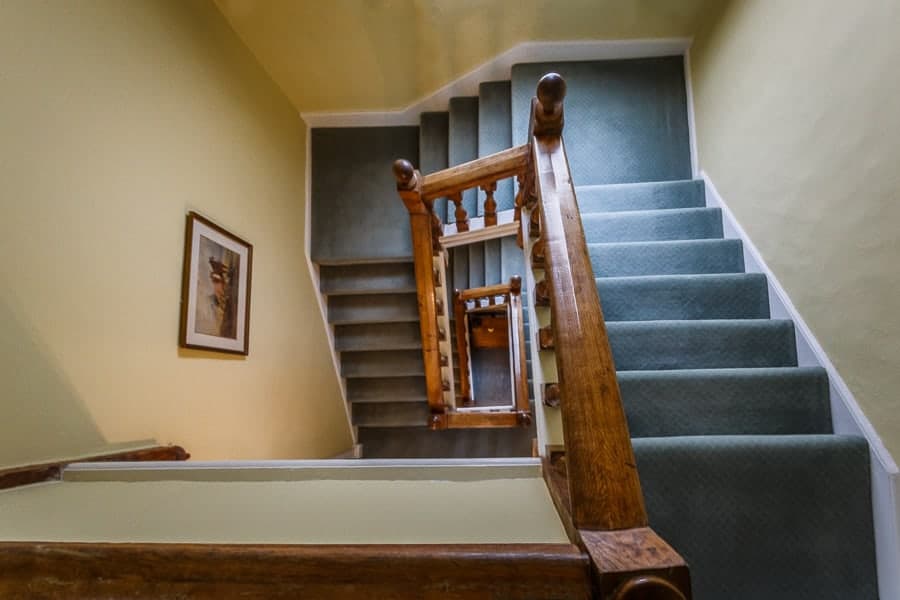
As a professional photographer I have a duty to provide my client with the best images I can in accordance with the brief.
3 – Plan the best time of day for the shoot
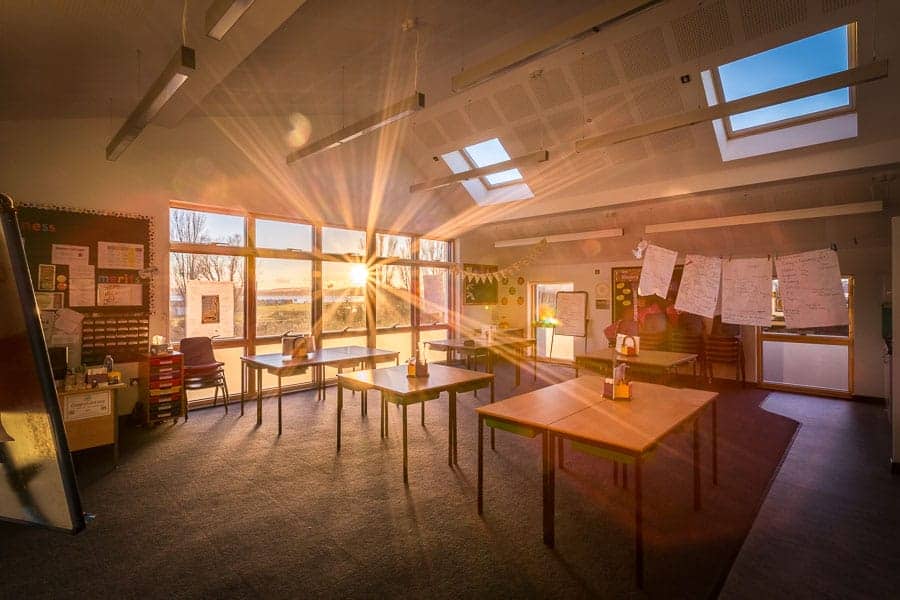
Here I mean specifically the time of day in terms of building orientation and the direction of the sun. Now that is making the grand assumption that there is any sun at all – always a risk in England, even down here in the sunny south!
In an ideal world I would photograph all elevations with the sun shining on them, but this never happens. And the interiors with lovely bright sunshine. I have to make the best use of the directional sunlight in the limited time available to me, often no more than 2 hours.
I ask the client which the most important elevations are externally, and when they think that these specific elevations look their best. Sure, I can work out the direction of the sun using apps, but that never tells about the shadows cast by trees etc. Nor it will tell me their preferences.
Clients like being asked all these questions so don’t worry about asking.
4 – Make sure all the lights are working
All the lights inside will be on when I take the photos. I always turn on all the lights, making an internal space look much more homely and alive. More than once I have turned up to photograph a house to find lightbulbs missing in ceiling lights and wall lights and lamps that do not work.
Just ask your client to check all the lights are working.
If there is a lamp in a shot that does not work it should be removed otherwise it just looks odd, especially with all the other lights on in a room.
On the subject of lamps, keep an eye out for trailing leads – it is much quicker to hide a lead than have to remove it later in Photoshop.
This applies to other leads of course.
5 – Remove anything you don’t want in a shot
When I photograph an interior space, I want it to look the best it can. This means that a room needs to be de-cluttered. This will make it look cleaner, sharper, more appealing and will give a better impression of space.
Quite often I find myself moving chairs and table from one room to the next.
This is not about making a room look larger than it is, especially if it is being photographed for sale. The purpose of the exercise is to photograph the room looking the best it can.
And if there is a room which is not to be photographed, put everything in there and shut the door!
6 – Move stuff away from doors
I like to photograph rooms with the doors open, showing the relationship from one room to another. This is especially important when photographing kitchen/ dining spaces.
This also can reduce the number of images that are required to tell the story of a house.
Hallways with rooms leading off them tell the viewer of the photographs how the house fits together.
7 – Open all the curtains fully
In asking for the client to do this you ensure that anything lurking behind the curtains gets moved out of view, and that you get the maximum amount of that lovely daylight into the room.
These days people want to see naturally light and airy internal spaces.
8 – Fresh bedding and towels
Bedding, throws, towels, even the curtains. Creased bedding can kill a fantastic shot of a bedroom and can be a nightmare to fix in Photoshop. Best to ask the client to provide nice clean bedding, towels, sheets etc. so this is done for you.
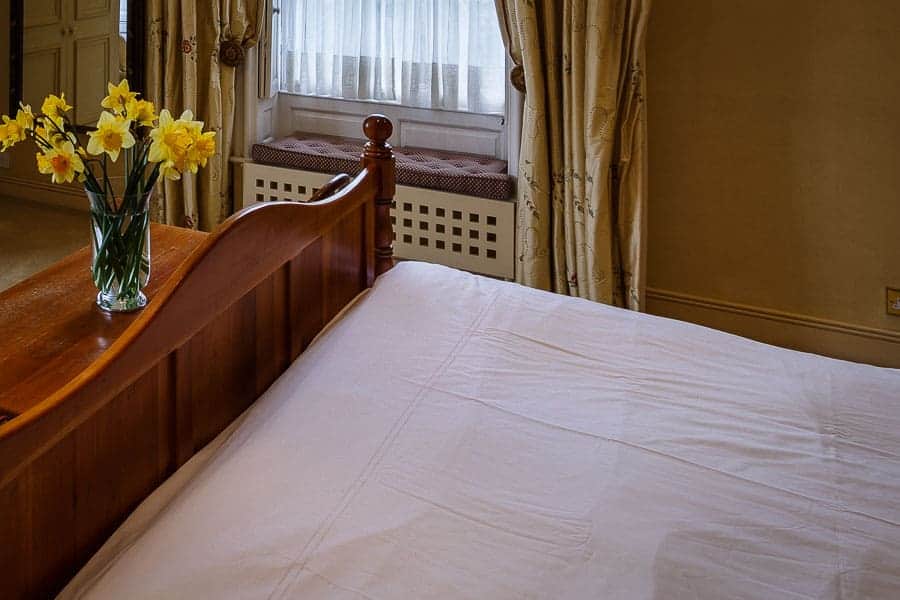
9 – Remove unwanted clutter from bathrooms and kitchens
Bathrooms and kitchens tend to have the most clutter which all needs removing off shelves, work surfaces, chairs tables, even the floor.
And while we are talking about bathrooms nice clean towels help make a room look sharp.
10 – Light the fire
If a room has a fire light it – that lovely glow will only enhance the feel of a room. Even if it is broad daylight in the middle of summer light the fire if possible. The photos could be viewed at any time of year.
And everyone loves a real fire!
And if the fire takes time to warm up, for the coals to get that lovely glow, ask the client to turn the fire on before you get there.
11 – Fresh flowers are great
Fresh flowers are great in any room. They add a splash of natural colour and into a room. I have moved flowers from room to room on shoots before, and no-one has ever called me out on this! Two bunches of flowers are best, different colours ideally.
And fresh fruit in bowls is great for kitchens and dining rooms.
Just keep an eye out for obvious bad colour clashes with fruit/ flowers and the décor.
12 – Move the remotes and cables
TV remotes live in front of the TV. This is just a modern fact of life. And we still have not managed to find a solution to the plethora of cables that we find in all rooms of our houses, ensuring that devices are constantly charging.
Check for leads hiding behind furniture that will need time spending in post-processing if not dealt with before taking a photo.
13 – Clear table tops and shelves
My desk is never fully clear. Most tables have something on them which does not belong there. And what a pain small unwanted items are to remove in Photoshop!
Sometimes I have to photograph a room from a different angle to exclude items from a room.
14 – Hide the cars
When you are photographing a house, you have to show the access to the house, and also the parking provision.
Now as much as I love cars they do not enhance the appearance of a building, unless you have fancy car that is.
I don’t. I would love to have an Aston Martin that I could park in front of the building I am photographing – maybe next year!
Move the cars, people are smart enough to envisage their car in a space if they can see the space, less so if there someone else’s car there!
15 – Cut the grass

A big one. Now this lovely lawn had just been cut (whilst I was photographing the other side of the building), and I made the best use I could of those lovely fresh stripes to give these very obvious leading lines from the end of the garden to the house.
I did not need to do anything to this lawn in Photoshop – nothing at all, which was a bonus to me.
16 – Get rid of the weeds and leaves
I refer back to the image above.
The garden was immaculate, no leaves, weeds, debris, stray flowers, plastic carrier bags, stray gravel, chewing gum.
Nothing – just an absolutely immaculate, lovely garden.
No Photoshop required.
As an aside, I photograph lots of schools, colleges and university buildings which have been refurbished or built. I have lost count of the number of pieces of chewing gum I have had to clone stamp out in Photoshop. And even more loose gravel and chippings.
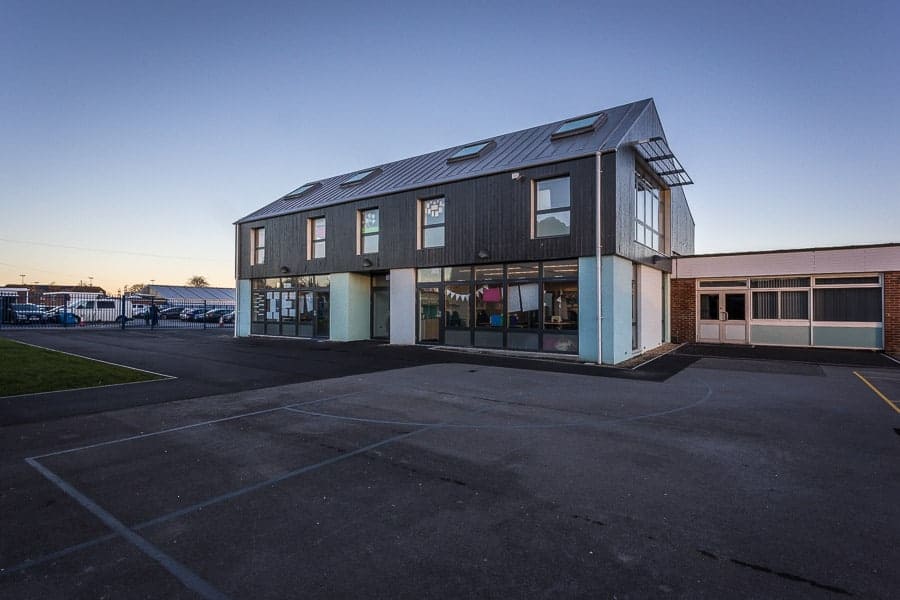
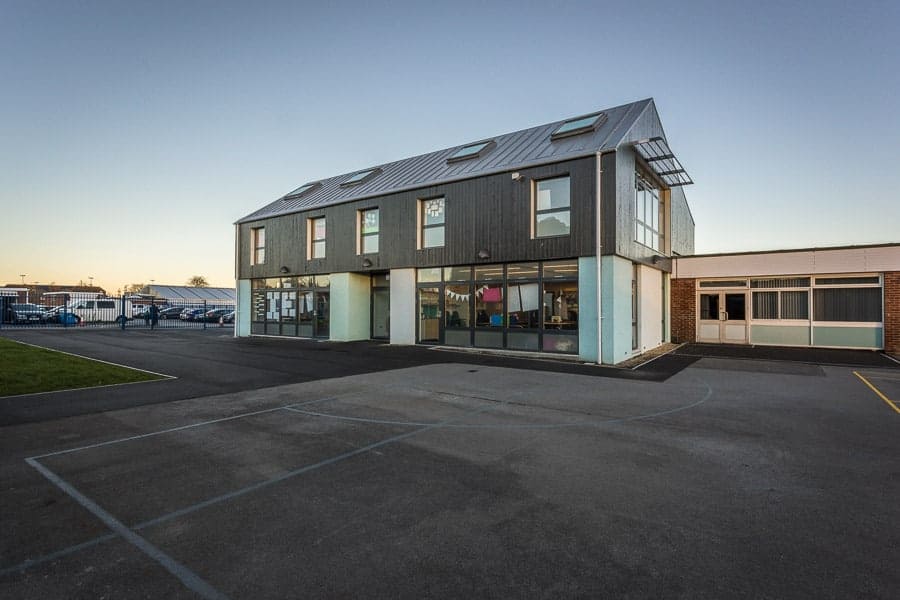
17 – Hide the bins
I normally have to move these round the corner, then back to where they were for the next shot and so on. Where I live we have two bins, a large blue one and a black one. That is the minimum number of bins a house in the UK will have, some have lots more.
I once forgot about the blue bin – how I have no idea as they are quite large – I had a nightmare getting rid of it in Photoshop.
And every house has a bin, so if they can be hidden in the garage or shed then ask for this to be done to help you.
18 – Get rid of the hosepipe and garden tools
The hose-pipe fixed to the wall often gets me. And quite often I miss it. I once had a major edit because I missed the wall mounted hose-pipe, which was completely rolled out and bunched up on the side path.
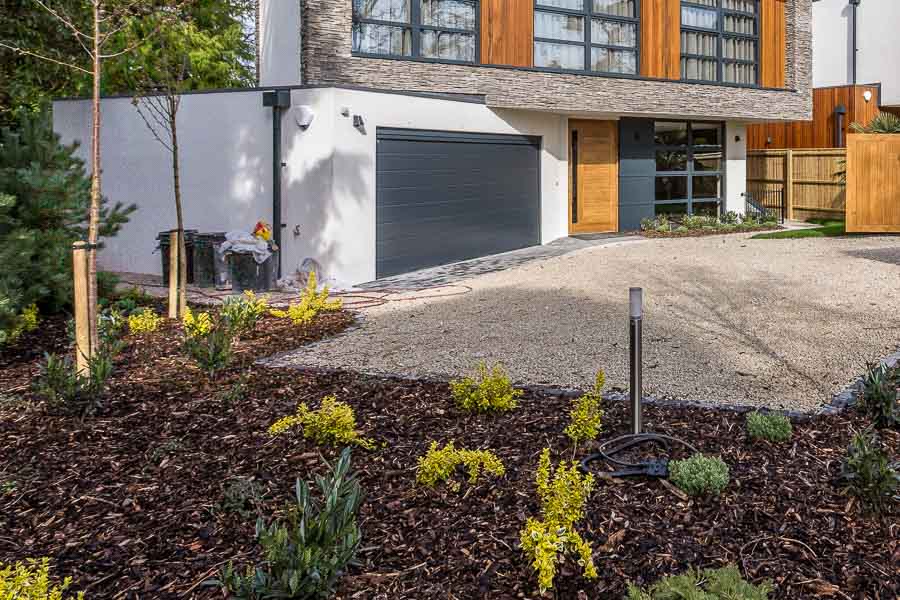
I missed it as I was photographing the side elevation with my camera on a painters’ pole, so was making the composition using my iPhone on a bright sunny day. In circumstances like this I am just glad to get the actual building in the shot – I had no idea about the hose-pipe!
Seriously, a hose-pipe can be a horrible thing to have to remove in Photoshop.
Here it is removed.
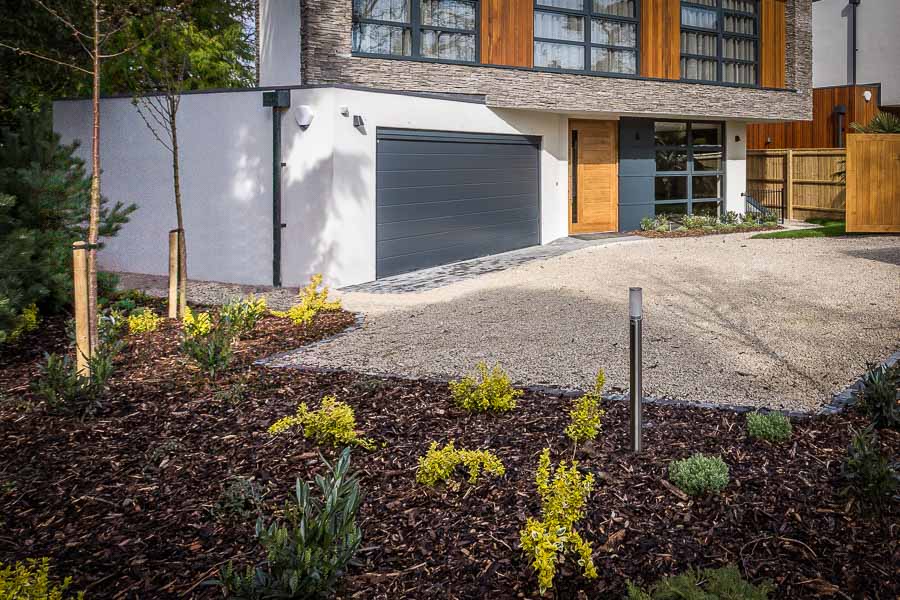
I only use Photoshop to remove things I do not want in a picture. If I get the shot 100% right I do not need to venture into Photoshop, which saves me time.
19 – Relax – you are in good hands with me. I have done this before!
Ask your client all of the above in advance and you will be giving them confidence that you are thorough, professional and know what you are doing. And also, that you are working hard to provide them with the best images possible.
Other buildings
I am going to adapt this checklist to other architectural shoots, namely
- Empty properties being photographed for sale – the problem goes the other way here in that empty spaces often do not look great
- Properties being photographed for architects
- Commercial premises
- Shops
- Educational establishments
- Public buildings and spaces
The basic principle of preparing the client for the shoot applies to any architectural shoot.
Summary
I suggest you produce a checklist of your own and send this checklist to a client a few days before your shoot. They will be better prepared to receive you, which will allow you to work more efficiently and help you produce the images more easily.
This will also get the client thinking about the shoot, and other things not on this list will be sorted in advance – it starts a thought process going.
I have started using this checklist with great success, and hope that you find it helpful, and that you use something similar which you can issue to your clients before photographing their buildings.
Any ideas for things to add to my list just let me know!
Thanks for reading this, and I look forward to your comments.

I love this because I could probably cut and paste the article with the title “19 Things that My Clients NEVER Do Before I Photograph Their House”. LOL!
I consider myself lucky if my clients clean the dirty laundry from their floors before I take photos. Of course photos of dirty underwear strewn all over the bedroom doesn’t stop homes from selling for $400,000 above asking, but still…. You would think that people would at least care about how others might perceive them when these photos go online. 😛
Hi Michael
Thanks for this. This is exactly why my target market is exclusive country residences!
With regards from England
Rick
Looks like fate stepped in. My wife manages high end vacation rental homes.advertising on the web. I recently did some remodeling & he decided he wanted new pictures. What are the odds. Carpenter/photographer. Anyway thanks for all your help. Rick Hollifield
Hi Rick
Thanks very much for your comments – that sounds most excellent – get paid to remodel then get paid to take the photos of your work!
WIth regards from England
Rick